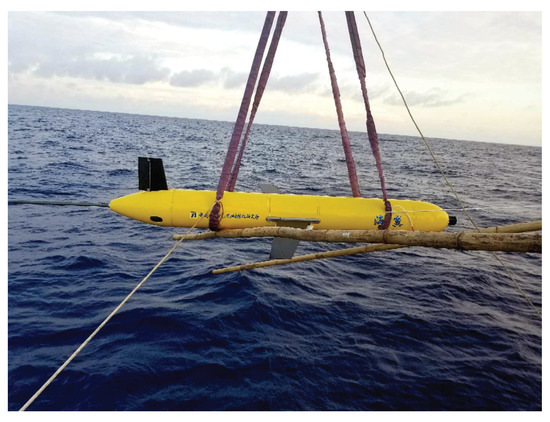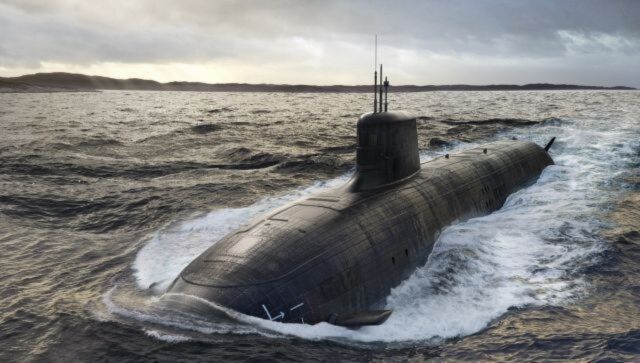Idrw Team
SOURCE: IDRW.ORG


In a significant leap forward for India’s indigenous defense capabilities, Bengaluru-based NewSpace Research and Technologies recently conducted the maiden flight of its Sheshnaag 150, a long-range strike Unmanned Aerial Vehicle (UAV). The successful test marks a pivotal moment for the company and underscores India’s growing prowess in advanced aerospace technology.
The Sheshnaag 150, designed as a precision strike platform, demonstrated its capabilities during the flight, particularly in its terminal phase. Engaging a designated ground target, the UAV achieved an impressive Circular Error Probable (CEP) of just 5 meters—a testament to its high precision and reliability. This metric, which measures the radius within which half of a weapon’s strikes are expected to land, highlights the Sheshnaag 150’s potential as a formidable asset for targeted operations.
Continue readingSOURCE: IDRW.ORG


At the Aero India 2025 exhibition, the Defence Research and Development Organisation (DRDO) of India introduced a new prototype of a 155 mm guided projectile, designed specifically for the Bharat Forge Limited’s (BFL) 155 mm/52 calibre Advanced Towed Artillery Gun System (ATAGS).
This innovative munition, captured in an image by idrw.org, has an fin-stabilized projectile, guided by a combination of GPS and an Inertial Navigation System (INS). Measuring 1 meter in length and weighing approximately 50 kg, the projectile is engineered to extend the firing range of the ATAGS to between 40 and 50 kilometers. According to DRDO officials, this guided projectile is still in its design and development phase, indicating future enhancements and potential production.
Continue readingSOURCE: IDRW.ORG


Aviation industrial expert Mahesh Hegde has raised concerns regarding the rationale behind the development of the RTA-90 aircraft based on turboprop engines, given the limited demand for such aircraft in India. Speaking to idrw.org, Hegde emphasized that market projections from major aerospace manufacturers indicate a marginal requirement for turboprop-powered regional jets in India over the next two decades.
According to Hegde, procurement projections by all major aerospace vendors that manufacture commercial jets suggest that only 6 percent of the total planned aircraft procurement by Indian airline operators in the next 20 years will consist of turboprop-powered regional jets. Instead, the market will be dominated by narrowbody jets, with a particular preference for aircraft in the A321 class, which are powered by high-bypass turbofan engines rather than turboprop engines.
Continue readingSOURCE: IDRW.ORG


Bengaluru-based NewSpace Research and Technologies (NRT) is once again pushing the boundaries of India’s aerospace and defense innovation with the Ishuk—a miniaturized glide device that transforms a basic aerial iron bomb into a precision-guided powerhouse. Unveiled as a marvel of aerodynamics and engineering, this compact system promises to revolutionize kinetic strikes with its pinpoint accuracy, exceptional range, and adaptability across multi-rotor and fixed-wing platforms. Designed for steep, direct attacks with minimal drag on its carrier aircraft, Ishuk signals NRT’s ascent as a trailblazer in unmanned aerial systems (UAS)—and a potent force multiplier for India’s armed forces.
At its core, Ishuk is a retrofit genius. It takes a standard unguided “dumb” bomb—typically a low-cost, high-explosive workhorse—and outfits it with a high-precision guidance and control kit. The result? A glide bomb that rivals costlier precision munitions in accuracy and lethality, without the hefty price tag. With a low radar cross-section and a high glide ratio, Ishuk extends the bomb’s range far beyond traditional free-fall limits, allowing strikes from safer standoff distances. Weighing next to nothing compared to its payload, it ensures the carrier—be it a drone or manned aircraft—suffers minimal performance penalty, a critical edge in dynamic combat zones.
Continue readingSOURCE: IDRW.ORG


India’s ambitious Tejas MkII program has taken a major leap forward in stealth technology, according to Dr. V. Madhusudana Rao, the Project Director of the Mk 2 programme at the Aeronautical Development Agency (ADA). In a recent statement, Rao revealed that the frontal Radar Cross Section (RCS) of the Tejas MkII is just one-fourth that of its predecessor, the Tejas MkI, marking a substantial improvement in the aircraft’s ability to evade radar detection.
“If the Tejas MkI has a frontal RCS of X square meters, the Tejas MkII achieves an RCS of just one-fourth of X,” Rao explained. This reduction is a testament to the meticulous design overhaul undertaken by the ADA and its partners, including Hindustan Aeronautics Limited (HAL). The MkII incorporates radar-absorbent materials (RAM), composite-heavy construction (making up 90% of its surface area), and redesigned airframe features like twisted air-intake ducts and close-coupled canards—all aimed at minimizing its radar signature from the front. While the aircraft is not a full stealth fighter, this improvement in frontal RCS enhances its survivability against enemy radar systems, a key advantage in modern air combat.
Continue readingSOURCE: IDRW.ORG


The Indian Air Force (IAF) is embarking on an ambitious project to revive its collection of vintage aircraft, aiming to bring back to life some of the historic planes that have graced its skies. Currently, the IAF’s vintage fleet includes the de Havilland Tiger Moth and the Harvard trainer, both of which have rich histories within the force. Now, there’s a buzz about potentially adding another legendary aircraft to this collection – the Hawker Hunter.
Dakota DC-3, Hurricane, and Spitfire aircraft, which have been part of IAF’s history, are slated for restoration. The Dakota DC-3, known for its versatility in transport and numerous military roles, the Hurricane, a formidable fighter from WWII, and the Spitfire, renowned for its speed and agility, are set to be brought back for flying displays, showcasing India’s aviation heritage.
Continue readingSOURCE: IDRW.ORG


The eagerly anticipated first trial of the Pinaka naval variant is slated to occur later this year, marking a significant milestone in naval defense technology. Developed as an advanced iteration of the renowned Pinaka multi-barrel rocket launcher system, this naval version is tailored specifically for underwater operations and submarine countermeasures.
Unlike its land-based predecessor, the Pinaka naval variant is engineered to tackle maritime threats, boasting an impressive range of 75 kilometers. This capability positions it as a formidable asset for naval forces, enhancing their ability to neutralize submarine-based threats from a safe distance. The system’s design reflects a strategic shift toward versatile, long-range underwater defense solutions, addressing the evolving challenges of modern naval warfare.
Continue readingSOURCE: IDRW.ORG


In a landmark development for Indo-US defense cooperation, India and the United States have signed a new pact to jointly produce advanced autonomous weapon systems, announced during a recent meeting between Prime Minister Narendra Modi and President Donald Trump on February 13, 2025. This initiative, named the Autonomous Systems Industry Alliance (ASIA), aims to forge robust industry partnerships between the two nations, focusing on the co-production of cutting-edge drone technologies. The systems developed under this alliance will not only bolster the defense capabilities of India and the US but also hold the potential for export to friendly nations, enhancing security in the strategically vital Indo-Pacific region.
The ASIA initiative builds on the U.S.-India Roadmap for Defense Industrial Cooperation, reflecting the growing importance of autonomous systems in modern warfare and maritime security. The pact, formalized during the Modi-Trump summit, underscores a shared commitment to counter regional challenges, particularly in the Indo-Pacific, where tensions with China have heightened the need for advanced surveillance and defense technologies.
Continue readingSOURCE: IDRW.ORG
)

India’s decision to prioritize the development of nuclear-powered attack submarines (SSNs) over acquiring additional aircraft carriers represents a significant shift in naval strategy, according to Dr. Elizabeth Buchanan, Senior Fellow at the Australian Strategic Policy Institute (ASPI). This response follows reports that the Ministry of Defence (MoD) has halted plans for procuring a third aircraft carrier in favor of accelerating the indigenous SSN program.
Dr. Buchanan stated, “India’s decision to throw everything at the SSN program signals a major doctrinal shift.” The move reflects a reassessment of India’s strategic priorities, emphasizing undersea warfare capabilities as a means to counter emerging regional threats and enhance naval deterrence.
Continue readingSOURCE: IDRW.ORG


In a significant stride toward self-reliance in defense technology, Astra Microwave Products Limited (AMPL), a Hyderabad-based leader in RF and microwave systems, has showcased its indigenously developed S-Band Active Antenna Array Unit (AAAU) Radiating Plate Assembly (RPA).
This cutting-edge system, realized in collaboration with the Electronics and Radar Development Establishment (LRDE), a laboratory under the Defence Research and Development Organisation (DRDO), represents a milestone in India’s radar technology development. The AAAU was demonstrated at AMPL’s state-of-the-art Radar Research and Development (R&D) facility in Bengaluru, where it underwent rigorous testing and validation, highlighting India’s growing capabilities in advanced defense electronics.
Continue readingSOURCE: IDRW.ORG


The Indian defense sector has achieved a significant milestone with the successful completion of captive trials for the RudraM-III missile system, integrated with the Su-30 MKI fighter jet. According to recent updates, the trials have been concluded, and the data gathered is now being analyzed to pave the way for inflight testing scheduled later this year. This development marks a crucial step forward in enhancing India’s indigenous missile capabilities.
During the captive trials, two RudraM-III missiles were mounted on the Su-30 MKI, a mainstay of the Indian Air Force’s fighter fleet. In addition to the captive trials, release trials using dummy missiles were also conducted to assess the missile’s integration and performance under simulated conditions.
Continue readingSOURCE: IDRW.ORG


At a recent defense demonstration, the Eastern Command of the Indian Army unveiled an impressive upgrade to its Smerch Multi Launch Rocket System (MLRS), with the addition of a Cope Cage for the first time. This enhancement is a significant development in the Army’s ongoing efforts to bolster the survivability and security of its heavy artillery against modern threats, including small kamikaze drones and FPV (First-Person View) drones.
While Cope Cage technology had previously been seen on the Indian Army’s T-90 and T-72 Main Battle Tanks (MBTs), this marks the first time the system has been integrated into rocket artillery systems like the Smerch MLRS. The move underscores the Army’s recognition of the evolving threat posed by unmanned aerial vehicles (UAVs), which have become a major concern on modern battlefields.
Continue readingSOURCE: IDRW.ORG


The 2025 edition of Aero India, held at the Yelahanka Air Force Station in Bengaluru from February 10-14, has once again proven to be a pivotal platform for showcasing India’s advancements in aerospace and defense technology. Among the standout exhibits this year, Hindustan Aeronautics Limited (HAL) unveiled its rebranded Intermediate Jet Trainer-36 (IJT-36) Yashas, a significantly upgraded version of its long-troubled Hindustan Jet Trainer (HJT-36).
The aircraft, previously known as “Sitara,” has undergone extensive modifications to address its technical challenges, and HAL is now confident that the Yashas will soon enter production. Furthermore, HAL is positioning a weaponized variant of the Yashas for the export market, targeting countries seeking a low-cost combat trainer for operations in less contested airspace.
Continue readingSOURCE: IDRW.ORG


Bengaluru-based defense technology firm Tonbo Imaging has achieved a significant milestone with its WaveStrike high-power microwave (HPM) directed energy weapon (DEW) system, unveiled at the Aero India 2025 show in Bangalore. The innovative system, designed to neutralize hostile unmanned aerial vehicles (UAVs) and other electronic targets, has secured contracts from militaries outside the Asia-Pacific region, marking a notable success for India’s growing defense industry on the global stage.
The WaveStrike HPM DEW was a standout feature at Aero India 2025, held at the Yelahanka Air Force Station in Bangalore from February 10-14, 2025. This third-generation system, developed indigenously by Tonbo Imaging, integrates advanced HPM technology with search and track radars and an electro-optical (EO) system for precise targeting. Mounted on a trailer connected to a Light Mobility Vehicle (LMV) 4×4, the WaveStrike is designed for mobility and rapid deployment across diverse operational terrains.
Continue readingSOURCE: IDRW.ORG


In a significant update for India’s defence sector, Hindustan Aeronautics Limited (HAL) Chairman DK Sunil recently announced that the Astra Mk1 Beyond Visual Range Air-to-Air Missile (BVRAAM) will be test-fired from the advanced Tejas Mk1A fighter jet within the next 15 days. This development, shared on February 18, 2025, marks a critical step toward enhancing the combat capabilities of the indigenous Light Combat Aircraft (LCA) and meeting the Indian Air Force’s (IAF) stringent requirements.
According to DK Sunil, the upcoming test firing is one of the final hurdles before the Tejas Mk1A can be fully certified and deployed operationally. Posts on X and defence news outlets have echoed this sentiment, with users and analysts noting that the test will provide crucial data on the missile’s performance when guided by the ELTA ELM-2052 AESA radar, a marked improvement over the older ELM-2032 radar used in earlier Tejas variants. The revalidation process is vital to ensure seamless integration and optimal performance, especially as the IAF plans to deploy the aircraft at forward airbases closer to potential conflict zones.
Continue reading